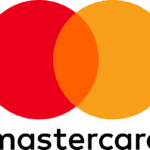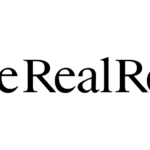Levi Strauss and Co. (LEVI) Stock Analysis

Levi Strauss & Co. (LEVI) Stock Analysis
Sector: Consumer Cyclical
Industry: Apparel Manufacturing
Analysis Date: April 4, 2025
1. Company Overview
Levi Strauss & Co. is an iconic apparel manufacturer recognized globally for its denim products, notably Levi’s jeans. Founded in 1853 and based in San Francisco, the company offers an extensive portfolio of casual and fashion apparel, footwear, and accessories through brands such as Levi’s, Dockers, Denizen, and Signature by Levi Strauss & Co. Despite its historic emphasis on denim, Levi Strauss continues to evolve, focusing on changing consumer trends, digital commerce expansion, and increased international presence.
Key Business Segments:
· Wholesale: Partnerships with department stores, specialty retailers, mass-market retailers, and distributors.
· Direct-to-Consumer (DTC): Company-managed retail stores, online platforms, and branded specialty stores.
· Licensing: Revenue from licensing deals covering accessories and related products.
Strategic Initiatives:
· Global Expansion & E-commerce: Growing international retail footprint and enhancing digital channels to directly engage consumers.
· Product Innovation & Sustainability: Developing advanced fabric technologies, creative collaborations, and sustainable manufacturing practices aligned with consumer preferences.
· Brand Diversification: Expanding beyond core denim products to diversify product lines and appeal to a wider customer base.
2. Financial Performance
a. Revenue & Growth
· TTM Revenue: $6.36 Billion
· YoY Revenue Growth (TTM): +2.85% (forecast indicates continued moderate growth)
Analysis:
Levi Strauss has achieved modest revenue growth, reflecting recovery from pandemic disruptions. Although growth trails faster-growing retail sectors, the strong global brand, effective DTC strategy, and diversified offerings underpin consistent revenue stability.
b. Profitability
· TTM Net Income: $210.60 Million
· EPS (TTM): $0.52
· Profit Margin: 3.31%
Analysis:
Levi’s profitability remains positive despite lower net income and EPS compared to historical peaks. Higher operating expenses, promotional discounts, and macroeconomic factors such as inflation and supply chain disruptions have impacted margins. Nonetheless, ongoing cost management efforts and strong brand positioning support stable profitability.
c. Margins
· Gross Margin (TTM): 60.04%
· Operating Margin (TTM): 10.28%
· EBITDA Margin (TTM): 13.32%
Analysis:
A robust gross margin exceeding 60% highlights Levi’s significant pricing power and enduring brand appeal. Operating margins (~10%) remain solid for the apparel industry, though recent headwinds from rising input costs and inventory management challenges have added pressure.
d. Free Cash Flow
· TTM Free Cash Flow: $670.90 Million
· FCF Per Share: Approximately $1.69
Analysis:
Levi’s strong free cash flow generation demonstrates operational efficiency and brand resilience. The solid liquidity supports strategic investments, marketing initiatives, store expansions, digital infrastructure enhancements, and dividends.
3. Balance Sheet & Liquidity
· Cash & Equivalents: $690.00 Million
· Total Debt: $2.21 Billion
· Net Cash Position: -$1.52 Billion (approximately -$3.85 per share)
· Book Value Per Share: $4.98
· Working Capital: $840.60 Million
Analysis:
Levi Strauss maintains moderate leverage (Debt/Equity ~1.12). Despite a notable net debt position, strong cash flow and brand equity underpin financial stability. Positive working capital ensures smooth operational management and adequate inventory financing.
4. Valuation
· PE Ratio (TTM): 35.04
· Forward PE: 14.59
· PS Ratio: 1.14
· PB Ratio: 3.67
· P/FCF Ratio: 10.78
· PEG Ratio: 1.35
Analysis:
The relatively high trailing PE (~35) reflects recent earnings volatility due to macroeconomic factors. However, the significantly lower forward PE (~15) indicates expectations of improving earnings. A reasonable P/FCF ratio (~11) suggests solid value considering Levi’s consistent cash generation and market presence.
5. Market Performance
· 52-Week Range: $15.62 – $24.34
· Current Price: $18.27 (latest close)
· Beta (5Y): 1.16
Analysis:
Levi’s stock currently trades toward the lower end of its 52-week range, affected by broad retail challenges including inflation and fluctuating consumer spending. A beta greater than 1 indicates slightly above-market volatility, reflecting the cyclical consumer discretionary nature of the industry.
6. Dividend & Shareholder Returns
· Dividend Per Share (TTM): $0.52
· Dividend Yield (TTM): 2.85%
· Payout Ratio: 100% (TTM)
Analysis:
The company provides an attractive dividend yield (~2.85%), although the high payout ratio suggests limited room for near-term dividend growth without a significant earnings increase.
7. Risks & Considerations
· Consumer Discretionary Nature: Revenue vulnerability to economic slowdowns and reduced discretionary spending.
· Competition & Fashion Trends: Intense competition and rapidly changing consumer preferences could affect market share.
· Inflation & Supply Chain Pressures: Rising production costs and supply disruptions may negatively impact profitability.
· Foreign Exchange & Global Exposure: Global revenue streams expose Levi’s to foreign exchange volatility and international market risks.
8. Conclusion
Pros:
· Iconic global brand offering stable customer loyalty and demand.
· Strong free cash flow supporting dividends and strategic growth initiatives.
· Attractive forward valuation metrics signaling anticipated earnings recovery.
· Consistent dividend yield enhancing shareholder returns.
Cons:
· High payout ratio limits potential dividend growth in the short term.
· Sensitivity to economic cycles affecting discretionary consumer spending.
· Continuous innovation required amidst strong competitive pressures.
· Persistent supply chain challenges and inflationary pressures impacting operational efficiency.
Final Note:
Levi Strauss & Co. demonstrates resilience through strategic adaptation and effective brand management, positioning it for moderate growth amid prevailing market headwinds. Current valuations indicate market optimism regarding future earnings recovery driven by solid free cash flow, digital initiatives, and brand strength.
Disclaimer:
This analysis is provided for informational purposes only and is not investment advice. Investing involves risks, including potential loss of principal. Past performance does not guarantee future results. Consult a qualified financial advisor before making investment decisions.





